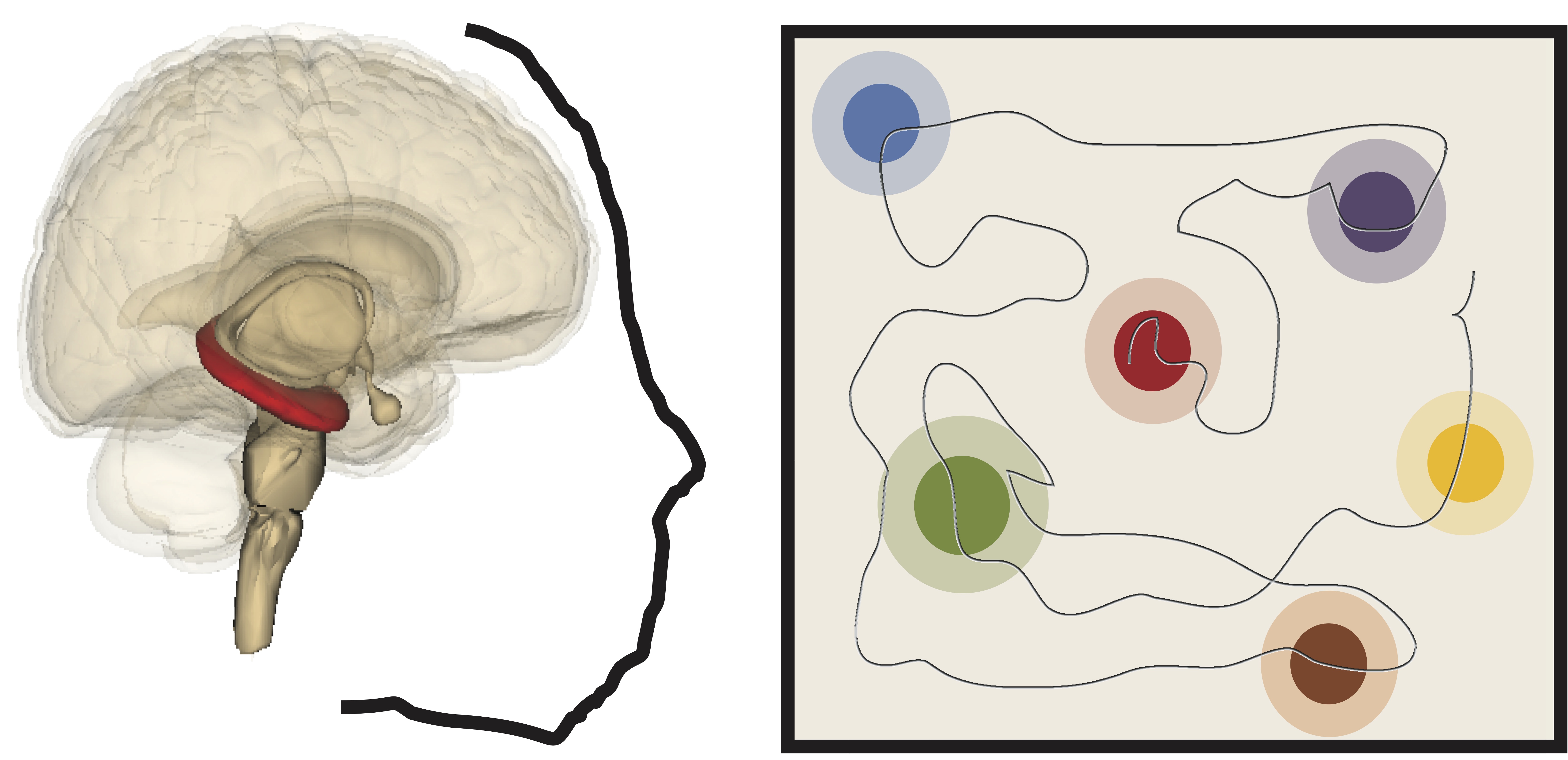
By Ornella Valenti
One of the final frontiers of human knowledge, the most fascinating from my perspective, lies within us: it is our mind. Here, recent years have witnessed terrific progresses in the understanding of cognitive processing. We now know that thoughts, memories, decisions, all arise from the activity of tiny cells in our brain, the neurons, that form networks within a given brain region and are connected in circuits across different regions.
It all started with Donald Hebb in 1949 who theorized that brain cells are organized in “assemblies”, where these “cell assemblies” are the brain’s fundamental cognitive units. One example here are hippocampal place cells whose discovery lead to John O’Keefe receiving the 2014 Nobel Price. The hippocampus, a region of the brain’s temporal area (in red, figure on the left), contains thousands of place cells. Each cell is active in a specific “place” of the surrounding environment (figure on the right) and internally communicates our position whenever we pass through that particular place.
The cumulative activity of many place cells, each activated in one specific place of the same space, signals the entire space and provide us with a “cognitive” map of the environment. In the figure shown here (right), each color is representative of the activity of one place cell in its specific place within the box. Altogether, the place cells active in a space constitute an assembly. Thus, place cell assemblies work like a GPS and with their activity provide an internal representation of the surrounding space.
In other words, they provide us with the sense of space. You know that you, for example, are in your kitchen thanks to the activity of place cells. This knowledge, once formed, is stable in time while also being dynamic, as it can be enriched by future experiences such as new colors, odors or changes occurring in the environment.
Following the discovery of place cells in the hippocampus, studies have suggested that neurons might also be organized into cell assemblies in many other brain regions. Neurons connected in assemblies communicate among each other and function as a team. Thus, individual elements and systems work in a strong and stable, yet highly dynamic relational structure. Coordinated activity of cell assemblies appears to be how our brains elaborate cognitive processes and lead to movement and action.